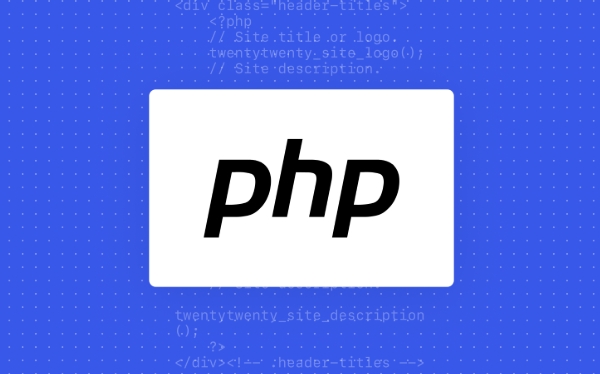The never return type in PHP 8.1 indicates that a function will not return any value, such as when it throws an exception, exits the script, or runs indefinitely. 1. Use never for functions that always throw exceptions. 2. Apply it to functions that terminate execution like exit() or die(). 3. Utilize it for infinite loops such as event loops. Unlike void, which implies intentional no return value, never means the function cannot return at all. Attempting to return a value—even null—results in a compile-time error. Benefits include improved static analysis, better code clarity, and safer logic handling, especially in validation functions that halt execution on failure.

The never return type in PHP 8.1 is used to indicate that a function will never return a value — not even null. This could be because the function throws an exception, exits the script, or enters an infinite loop. It’s a way to communicate intent clearly in your code and help static analyzers catch potential bugs.

When Should You Use never?
You should use the never return type in situations where execution after the function call won't continue normally. Common cases include:

- Functions that always throw exceptions
- Functions that terminate the script (like
exit()ordie()) - Functions that run indefinitely (e.g., event loops or daemons)
Using never makes it clear to other developers — and tools like IDEs and static analysis — that this function doesn’t return control to the caller.
Examples:

- A utility function that throws a custom exception
- A function that validates input and throws if something's wrong
- A script bootstrapper that exits early under certain conditions
How Is It Different From void?
At first glance, never might look similar to void, but they're quite different:
-
voidmeans a function returns nothing intentionally — it just does something. -
nevermeans the function cannot return at all because something interrupts normal flow.
For example:
function logMessage(string $message): void {
echo $message;
}
function fail(): never {
throw new Exception('Failure!');
}In this case, logMessage() just does its job and returns, while fail() never gives the program a chance to continue.
One important thing: you can't return anything from a never function — not even null. If you try, PHP will throw a compile-time error.
Practical Benefits of Using never
Using never helps with better code clarity and improves tooling support:
- Static analysis: Tools like Psalm or PHPStan can catch unreachable code or invalid assumptions.
- Code readability: Other developers can immediately see that this function changes the normal flow.
- Safer logic: Helps avoid incorrect handling of return values that will never exist.
A real-world example might be validation functions that throw early:
function validateEmail(string $email): never {
if (!filter_var($email, FILTER_VALIDATE_EMAIL)) {
throw new InvalidArgumentException("Invalid email address.");
}
}This makes it clear that if the function completes, execution stops — which helps when chaining validations or building APIs with strict input checks.
That’s the basic idea behind never in PHP 8.1. It's not something you'll use every day, but when appropriate, it makes your intentions clearer and helps prevent logic errors.
The above is the detailed content of What is the never return type in PHP 8.1?. For more information, please follow other related articles on the PHP Chinese website!

Hot AI Tools

Undress AI Tool
Undress images for free

Undresser.AI Undress
AI-powered app for creating realistic nude photos

AI Clothes Remover
Online AI tool for removing clothes from photos.

Clothoff.io
AI clothes remover

Video Face Swap
Swap faces in any video effortlessly with our completely free AI face swap tool!

Hot Article

Hot Tools

Notepad++7.3.1
Easy-to-use and free code editor

SublimeText3 Chinese version
Chinese version, very easy to use

Zend Studio 13.0.1
Powerful PHP integrated development environment

Dreamweaver CS6
Visual web development tools

SublimeText3 Mac version
God-level code editing software (SublimeText3)
 PHP Variable Scope Explained
Jul 17, 2025 am 04:16 AM
PHP Variable Scope Explained
Jul 17, 2025 am 04:16 AM
Common problems and solutions for PHP variable scope include: 1. The global variable cannot be accessed within the function, and it needs to be passed in using the global keyword or parameter; 2. The static variable is declared with static, and it is only initialized once and the value is maintained between multiple calls; 3. Hyperglobal variables such as $_GET and $_POST can be used directly in any scope, but you need to pay attention to safe filtering; 4. Anonymous functions need to introduce parent scope variables through the use keyword, and when modifying external variables, you need to pass a reference. Mastering these rules can help avoid errors and improve code stability.
 How to handle File Uploads securely in PHP?
Jul 08, 2025 am 02:37 AM
How to handle File Uploads securely in PHP?
Jul 08, 2025 am 02:37 AM
To safely handle PHP file uploads, you need to verify the source and type, control the file name and path, set server restrictions, and process media files twice. 1. Verify the upload source to prevent CSRF through token and detect the real MIME type through finfo_file using whitelist control; 2. Rename the file to a random string and determine the extension to store it in a non-Web directory according to the detection type; 3. PHP configuration limits the upload size and temporary directory Nginx/Apache prohibits access to the upload directory; 4. The GD library resaves the pictures to clear potential malicious data.
 Commenting Out Code in PHP
Jul 18, 2025 am 04:57 AM
Commenting Out Code in PHP
Jul 18, 2025 am 04:57 AM
There are three common methods for PHP comment code: 1. Use // or # to block one line of code, and it is recommended to use //; 2. Use /.../ to wrap code blocks with multiple lines, which cannot be nested but can be crossed; 3. Combination skills comments such as using /if(){}/ to control logic blocks, or to improve efficiency with editor shortcut keys, you should pay attention to closing symbols and avoid nesting when using them.
 How Do Generators Work in PHP?
Jul 11, 2025 am 03:12 AM
How Do Generators Work in PHP?
Jul 11, 2025 am 03:12 AM
AgeneratorinPHPisamemory-efficientwaytoiterateoverlargedatasetsbyyieldingvaluesoneatatimeinsteadofreturningthemallatonce.1.Generatorsusetheyieldkeywordtoproducevaluesondemand,reducingmemoryusage.2.Theyareusefulforhandlingbigloops,readinglargefiles,or
 Tips for Writing PHP Comments
Jul 18, 2025 am 04:51 AM
Tips for Writing PHP Comments
Jul 18, 2025 am 04:51 AM
The key to writing PHP comments is to clarify the purpose and specifications. Comments should explain "why" rather than "what was done", avoiding redundancy or too simplicity. 1. Use a unified format, such as docblock (/*/) for class and method descriptions to improve readability and tool compatibility; 2. Emphasize the reasons behind the logic, such as why JS jumps need to be output manually; 3. Add an overview description before complex code, describe the process in steps, and help understand the overall idea; 4. Use TODO and FIXME rationally to mark to-do items and problems to facilitate subsequent tracking and collaboration. Good annotations can reduce communication costs and improve code maintenance efficiency.
 Learning PHP: A Beginner's Guide
Jul 18, 2025 am 04:54 AM
Learning PHP: A Beginner's Guide
Jul 18, 2025 am 04:54 AM
TolearnPHPeffectively,startbysettingupalocalserverenvironmentusingtoolslikeXAMPPandacodeeditorlikeVSCode.1)InstallXAMPPforApache,MySQL,andPHP.2)Useacodeeditorforsyntaxsupport.3)TestyoursetupwithasimplePHPfile.Next,learnPHPbasicsincludingvariables,ech
 How to access a character in a string by index in PHP
Jul 12, 2025 am 03:15 AM
How to access a character in a string by index in PHP
Jul 12, 2025 am 03:15 AM
In PHP, you can use square brackets or curly braces to obtain string specific index characters, but square brackets are recommended; the index starts from 0, and the access outside the range returns a null value and cannot be assigned a value; mb_substr is required to handle multi-byte characters. For example: $str="hello";echo$str[0]; output h; and Chinese characters such as mb_substr($str,1,1) need to obtain the correct result; in actual applications, the length of the string should be checked before looping, dynamic strings need to be verified for validity, and multilingual projects recommend using multi-byte security functions uniformly.
 Quick PHP Installation Tutorial
Jul 18, 2025 am 04:52 AM
Quick PHP Installation Tutorial
Jul 18, 2025 am 04:52 AM
ToinstallPHPquickly,useXAMPPonWindowsorHomebrewonmacOS.1.OnWindows,downloadandinstallXAMPP,selectcomponents,startApache,andplacefilesinhtdocs.2.Alternatively,manuallyinstallPHPfromphp.netandsetupaserverlikeApache.3.OnmacOS,installHomebrew,thenrun'bre






